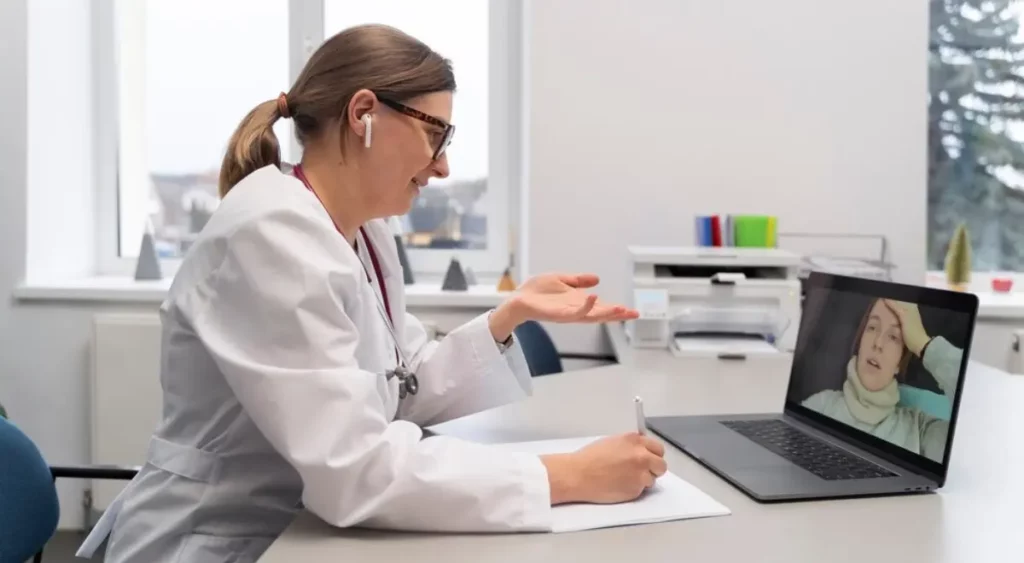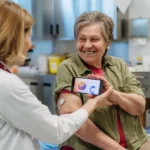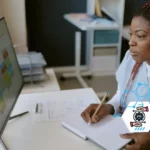Leveraging RPM to Promote Preventive Care during Winter Months

Want to keep health issues at bay this winter? If yes, preventive health care is the key. With winter months seeing a 37% increase in respiratory-related hospitalizations and a 23% spike in emergency department visits, according to CDC data, the need for proactive health management becomes even more critical during colder months.
The adoption of remote monitoring technology has made preventive care the new norm, reducing medical costs and enabling prompt diagnosis of underlying ailments. CMS data shows that winter healthcare costs increase by 15%–18%, making preventive RPM solutions more valuable than ever.
Remote monitoring technologies like telehealth and Remote Patient Monitoring (RPM) have considerably enhanced the quality of healthcare services delivered in the comfort of a patient’s home. It benefits patients and helps providers in saving both time and resources spent on patient care at an in-clinic facility. Medicare now covers RPM services through CPT codes 99453-99458, with proven winter cost savings averaging $12,000-15,000 per patient annually.
Table of Contents
ToggleWinter Health Challenges Overview
The winter season presents unique health risks that make RPM more essential:
- Cardiovascular stress increases by 31% during cold weather, leading to higher heart attack risks (American Heart Association).
- On average, blood pressure rises by 5–10 mmHg during colder temperatures.
- COPD exacerbations increase by 42% during winter months (American Lung Association).
- Seasonal Affective Disorder affects 10-20% of Americans during winter months.
- Holiday stress and dietary changes contribute to a 25% increase in diabetes-related complications.
Role of RPM in Preventive Care
After the COVID-19 pandemic, the need for virtual care has increased, and both patients and providers are relying on it like never before. Winter weather compounds this need, with 31% of elderly patients missing appointments due to weather conditions, according to Medicare provider data. There are several types of remote care technologies that are offering reliable disease management and preventive care services for optimal health outcomes.
RPM is a form of healthcare delivery model that uses telehealth technology to facilitate communication between clinicians and patients and collect patient health data outside of inpatient clinical settings. This helps in closing the current patient-provider communication gap and boosts the engagement rate. During winter months, RPM becomes even more critical, as it reduces weather-related appointment cancellations by 67%, according to CMS quality reporting.
Healthcare providers believe that they can considerably improve patient health while reducing the number of doctor visits. The majority of healthcare organizations using remote care technologies have confirmed that they witnessed patient satisfaction and data efficiency after implementing an RPM system at their facility. Winter RPM programs report 89% patient satisfaction rates and a 38% reduction in seasonal hospitalizations.
Benefits of Remote Patient Monitoring for Preventive Care
When it comes to preventive care, RPM offers a number of benefits that go beyond just regular monitoring and timely interventions. During the winter months, when health risks increase, these benefits become even more pronounced. Some of the common ones include:
Increased Connectivity
Prior to the introduction of remote patient monitoring, in-person appointments were the sole means of patient-doctor interaction. However, with RPM technology, preventive care has advanced significantly. Doctors and patients can now communicate freely at any time through a digital health platform that tracks patients’ vitals using remote monitoring devices connected to the RPM platform, significantly preventing the onset of ill-health conditions and improving healthcare management.
Chronic Care Management
Chronic conditions require better preventive care and continuous monitoring to avoid emergency hospitalizations and readmissions. RPM enables consistent and regular monitoring of patients, rather than periodic check-ups. The procedure plays a significant role in preventive care and allows close monitoring of chronic diseases and identification of any abnormalities in a patient’s health data before the condition deteriorates.
Easy Accessibility
Remote patient monitoring makes healthcare simple and effortless. With a cloud-based platform that enables virtual patient-provider communication, medical records and patient data can be accessed easily, eliminating the need to sift through paperwork and physical files With the ability to connect with electronic health records, many advanced healthcare platforms like HealthArc can quickly link to current healthcare systems for better services and effective preventive care. This accessibility becomes crucial during winter weather when physical access to healthcare facilities may be limited or dangerous.
Patient Empowerment
When a preventive healthcare application or RPM software is equipped with the necessary tools and technology to track the health vitals, patients can take responsibility for monitoring their own health. Multiple remote patient monitoring devices, such as blood pressure monitors, weight scales, pulse oximeters, and glucometers, can be used for self-monitoring. Winter isolation affects 42% of seniors, making self-monitoring capabilities essential for maintaining healthy independence during challenging weather conditions.
Appointment Scheduling
Patients can make appointments directly using the mobile healthcare app, rather than telephoning the team available at a healthcare organization. The majority of RPM software allows patient appointment functionality that goes through a set of automated stages to schedule an appointment without human intervention. This feature reduces the 23% average cancellation rate for winter appointments by enabling flexible virtual scheduling.
Medical Data Records
Healthcare institutions recognize the difficulties involved in obtaining medical information from patients. Remote patient monitoring for preventative care enables the sharing of health-related data, which is in automated form and made available to all EHRs connected with the RPM system. During winter, when weather conditions may interrupt manual data collection, automated data collection becomes especially valuable.
Appointment Reminders
Appointment reminders are a valuable preventive healthcare tool that ensures patients don’t end up forgetting their virtual appointments. This eliminates a large amount of repetitive administrative work and reduces the number of no-shows. An RPM platform sends the patient an automated reminder based on the last appointment booking information submitted. Winter weather-related stress can affect memory and routine, making automated reminders even more critical.
Medication Reminders
Inaccuracies in self-assessment by a healthcare professional typically led to delays in drug administration and subsequent health complications. Patients recognize that they can achieve enhanced health outcomes by attending their medical visits on time and adhering to prescribed prescription regimens. Winter weather can also make it difficult to journey to the pharmacy, and 34% of patients reported that weather-related delays caused them to miss their prescriptions. For this reason, RPM drug tracking is essential.
Reduced Healthcare Expenditures
RPM is important in reducing substantial costs for healthcare providers and patients. Patients can maintain their health and prevent hospitalizations by adhering to their drug schedules, reporting health data, and arranging regular check-ups. Similarly, healthcare organizations can reduce expenses related to administrative documentation and in-person consultations. Savings during the winter are significant. For example, the average cost of a hospital stay during the winter is $12974,, whereas the average cost of RPM per month is $200 to $400.
Less Administrative Workload
A healthcare company requires management staff to handle paperwork, appointment follow-ups, administration of patient data, and other tasks. However, it is easy to perform all these operations with smart RPM technology. These robotic systems may lead to less administrative work. Automated RPM processes come in handy even more during winter, when staff might also be absent due to poor weather conditions, increasing the need to ensure regular care.
Winter-Specific RPM Applications
The season of flu is here:
- COPD and asthma patients’ continual oxygen saturation evaluation
- Early signs of respiratory changes in the pattern
- The flu season is an illness that plagues 5—20% of the population each year, making it crucial to monitor.
- 44% decrease in respiratory-related ER visits and active RPM monitoring
The cardiovascular monitoring in cold weather:
- Monitoring blood pressure and heart rate during decreases in temperature is crucial.
- Cold weather raises the risk of heart attacks by 31% (American Heart Association).
- Early identification of stress signs in cardiovascular problems.
- Adjusting activity levels according to the weather conditions is important.
Holiday Health Management:
- Monitoring of glucose during eating holidays.
- Holidays increased hospitalization due to diabetes by 26%.
- Exercise outdoors with limited time to lose weight.
- Monitoring stress levels during the holiday season is important. n is important.
Mental Health Support:
- Monitoring mood and sleep patterns related to Seasonal Affective Disorder (SAD) is crucial during the winter months.
- Depression in the winter occurs in 10-20% of Americans.
- Mental health prescription adherence
- Monitoring social connections can help combat isolation.
Cost Impact/Medicare Coverage
Medicare RPM Coverage on average (2024-2025):
- CPT 99453: First setup and training: $19.74.
- CPT 99454: Device supply and data transmission—$65.20.
- CPT 99457: First 20 minutes of clinical staff time – $53.93
- CPT 99458: An extra 20 minutes of clinical staff time—$44.21
For detailed information on RPM billing and reimbursement, refer to our comprehensive guide on how Remote Patient Monitoring billing works.
Winter Cost-Effectiveness:
- The average cost of hospitalization during winter is $15,734 per patient. (see above or add on average)
- RPM monthly cost: $200-400 per patient
- The savings that could be made annually are $12,000–15,000 per patient.
- Medicare ROI on winter RPM: 312%
Winter conditions that can be avoided:
- Heart failure exacerbations: average cost of $23,077
- COPD complications: average cost = $18,963
- Diabetic emergencies: the average cost is $13,507.
- Potential total savings on Medicare in winter: $2.4 billion a year
Conclusion
Preventive care enables remote patient monitoring to deliver quality healthcare services in the comfort of the home. Greater security and controlled compliance have reduced the risks associated with the use of these technologies. Due to the 37% increase in health risks and significant cost rises associated with winter months, RPM has become a necessity rather than just a practical tool for achieving optimal patient outcomes.
The evidence is compelling:
- Appointment cancellations due to weather have decreased by 67%.
- There was a 38% reduction in winter hospitalizations.
- Average cost savings per patient of $12,000–15,000.
- Patient satisfaction with winter RPM is 89%.
HealthArc is a trustworthy advanced healthcare solution that helps medical practices connect with their patients and works smoothly with all major EHRs using HL7 or FHIR interoperability. Patients can easily receive healthcare services through audio and video calls, as well as SMS, allowing healthcare providers to make timely interventions. We have developed a platform specifically designed to meet the unique demands of winter healthcare delivery, ensuring that care can be provided at all times, regardless of weather conditions.
Don’t let the winter weather influence your patients’ healthcare choices. The ideal moment to introduce full-scale RPM solutions is now, as the proposed Medicare coverage expansions in 2026 offer up to 40% higher reimbursement opportunities and specific seasonal monitoring programs. To learn how our digital health platform can help you market preventive care and enhance care coordination during the challenging winter months and beyond, book a free demo or call (201) 885-5571. Prepare your practice to take advantage of the current Medicare improvements and provide better winter care.
Frequently Asked Questions (FAQs)
Preventive care is crucial in winter because respiratory-related hospitalizations rise by 37%, emergency visits increase by 23%, and cardiovascular risks surge by over 30%. Remote Patient Monitoring (RPM) enables early detection and management of these conditions, reducing avoidable complications and hospital admissions.
RPM allows healthcare providers to continuously track patients’ vitals—like oxygen saturation, heart rate, and blood pressure—through connected devices. This helps identify early warning signs of respiratory or cardiac issues, ensuring timely intervention before conditions worsen during colder months.
Key benefits include improved patient connectivity, continuous chronic care management, better medication adherence, reduced appointment cancellations, and cost savings of up to $12,000–$15,000 per patient annually. RPM also lowers administrative workload and ensures access to care even when travel is limited by weather.
RPM is especially effective for managing COPD, asthma, diabetes, heart disease, and hypertension—conditions that typically worsen in cold weather. The technology helps keep track of important numbers like blood glucose, oxygen levels, and blood pressure. This feature makes it possible to intervene early and avoid having to go to the hospital in an emergency.
Many patients experience Seasonal Affective Disorder (SAD) or increased isolation during winter. RPM platforms enable doctors to remotely monitor mood, sleep patterns, and engagement levels. This helps them spot early signs of depression and make sure that mental health support is available when needed.
Yes. Medicare pays for RPM under CPT codes 99453–99458, which cover the time it takes to set up the system, send data, and review the results. The average monthly cost of RPM is $200 to $400 per patient, and the return on investment (ROI) is over 300% because it lowers hospitalizations and improves outcomes.
Some important RPM features are
- Spirometers and pulse oximeters that are connected
- Automated reminders for appointments and medications
- Sharing data in real time with EHRs (FHIR/HL7)
- Remote therapeutic monitoring (RTM) to keep track of symptoms
- AI-powered alerts that let you know when an exacerbation is about to happen
HealthArc offers an advanced, interoperable RPM platform that works well with major EHR systems thanks to HL7 and FHIR. It supports remote spirometry, cardiovascular monitoring, and chronic care management, which means that providers can give high-quality, compliant care regardless of what the weather is like.
RPM can save Medicare an estimated $2.4 billion a year by stopping problems like heart failure, COPD flare-ups, and diabetic emergencies. With regular remote monitoring and preventive intervention, you can avoid hospital stays that cost between $13,000 and $23,000 each.
AI-driven predictive models, wearable sensors for passive monitoring, and expanded value-based reimbursement programs are some of the new trends. The 2026 Medicare updates are likely to raise RPM reimbursement rates by as much as 40%, which will help more people use digital care programs that help prevent problems.
Most Recent Blogs
Categories
Related Blog
- October 23, 2025 | Read Time: 12 mins
How RPM Devices Improve Hypertension and Diabetes Outcomes in Medicare Populations
Remote patient monitoring (RPM) is transforming chronic care for Medicare beneficiaries. CMS...
Learn More- August 25, 2025 | Read Time: 13 mins
How Can “One Big Beautiful Bill” Boost RPM Programs by $50B?
The “One Big Beautiful Bill,” signed July 4, 2025, directs $50B over...
Learn More- August 22, 2025 | Read Time: 17 mins
HealthArc Platform vs RPM Software Solutions
Is your healthcare organization trying to pick a remote patient monitoring solution?...
Learn More


